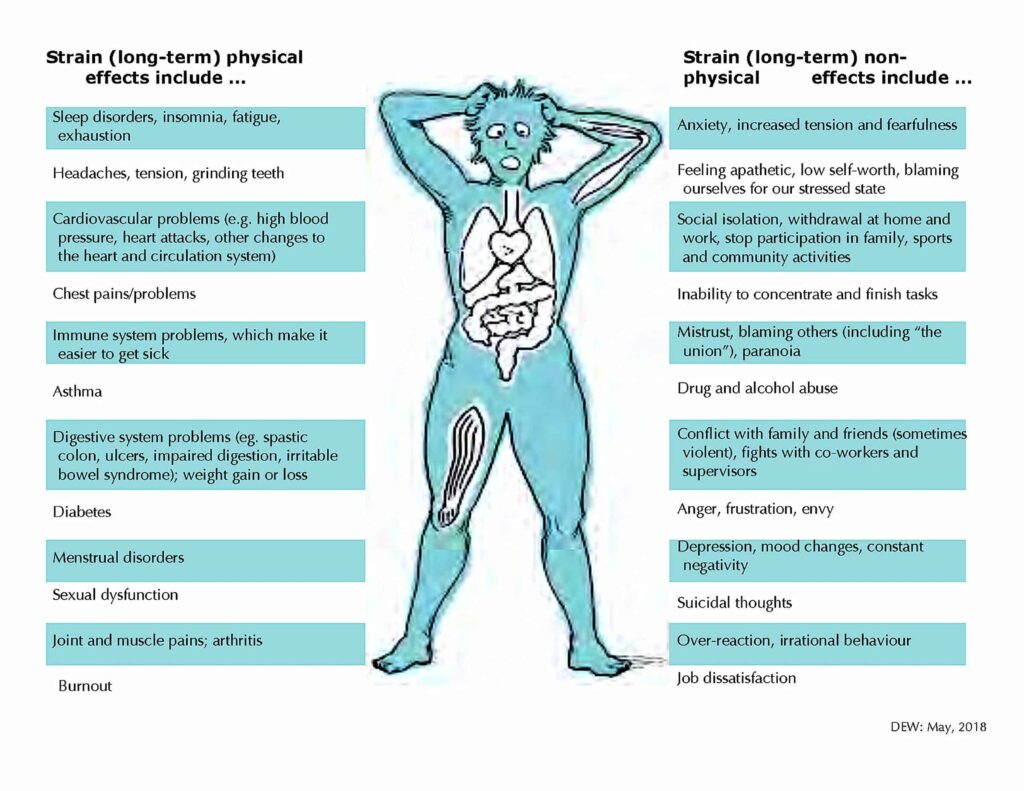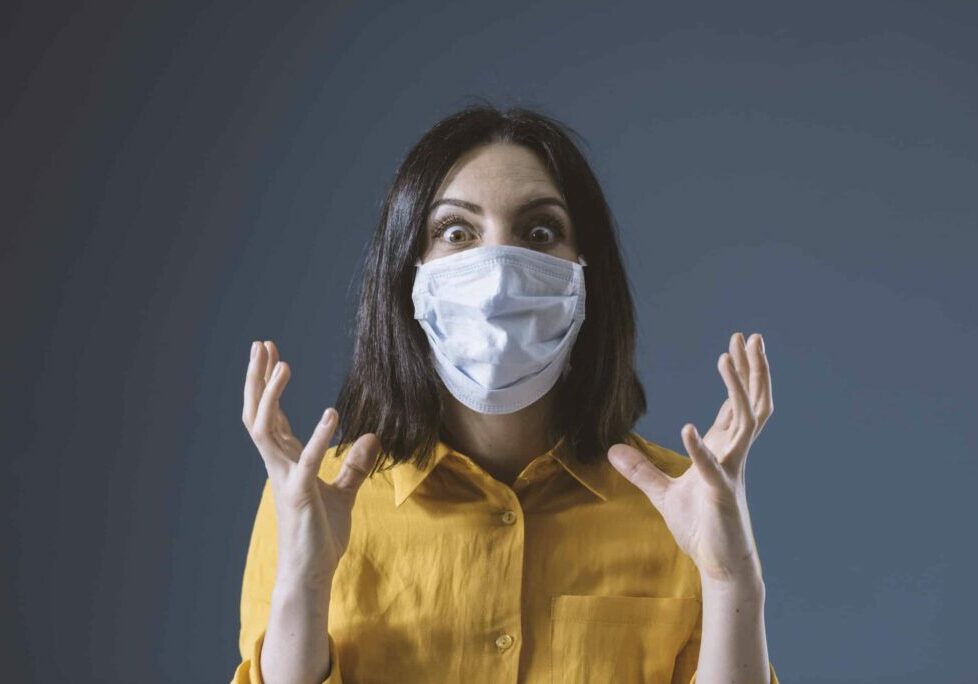By Dorothy Wigmore
The evidence is in. The pandemic is taking a huge toll on education workers’ mental health. Physical health is next.
Recent surveys in New Jersey, Canada and the United Kingdom have similar messages:
• Many education workers’ workload has increased.
• Anxiety or stress levels are going through the roof.
• Most educators are spending their own money on supplies including protective gear.
• Many schools are not effectively protecting staff and students or providing them with information about pandemic health and safety protections.
“Across the board, we found that stress levels for members in their work—and overall life—skyrocketed during COVID,” says NJEA Communications Director Steve Baker. “There was close to doubling of self-reported increases in both categories. On a scale of one to 10, it was 7.9 for job-related stress and 8.1 for things overall.”
“It’s really important to note that the highest stress levels were from those providing hybrid education—a really challenging and difficult way to work—followed by those fully in person, and only slightly lower were those who were fully remote,” Baker adds.
The December survey also found a majority of educators didn’t feel safe going to their schools and almost half the members responding had lost income or worried about expenses. People of color, men and educational support professionals were most affected.
In the United Kingdom, surveys keep finding teachers with very high levels of anxiety, high workload and feeling undervalued. Large numbers say they may leave the sector.
The late 2020 survey of Ontario elementary education workers had similar results. “The most striking finding was that the educators’ levels of anxiety were higher than for health care workers,” occupational hygienist John Oudyk told an April 30 webinar. While co-worker support improved significantly, workload, work pace, role conflict, predictability, burnout and sleep symptoms got much worse.
Oudyk linked anxiety levels to infection control practices (ICPs)—everything from cleaning and wearing barrier face coverings to ventilation and staggered schedules.
“What a striking difference there was between educators who had all their ICP needs met and those with none met,” he said. Twenty-four percent of those who thought their ICP needs were met had moderate or severe anxiety; 70 percent of those who thought they got no ICPs were in that category.
“It’s very seldom you see such a dramatic difference. Just providing what’s needed for ICPs in schools can make a huge difference to their mental health.”
 Stressors take their toll – and can make getting the virus worse
Stressors take their toll – and can make getting the virus worse
“Stress” is the short-term reaction to stressors—hazards such as high demands, low control, long hours, bullying, unfair treatment and lack of support.
When the problems continue, the long-term or chronic effects—strain or toxic stress—appear in many body systems. Increased blood pressure can lead to heart attacks and strokes. The immune system responds less effectively, making it harder to fight off infection. Aging seems to accelerate the impact. Coping behaviors can lead to further harm. (See the graphic.)
Job-related stressors can fit into four categories:
• Too many mental and physical demands.
• No control or say about the job (what’s done, how, by whom, when).
• No support, from co-workers, supervisors, organizations.
• Lack of respect (e.g., bullying, unfair treatment).
“The pandemic has caused much uncertainty, anxiety, and stress, touching on nearly every aspect of our lives,” Marnie Dobson wrote in a recent Healthy Work Campaign blog (see link in sidebar). “Work stressors such as unemployment, underemployment, increased workloads, reduced social support, difficulty attending to personal and family needs, and a blurring of the lines between work and family life have been heightened during this pandemic.”
Pandemic-related stressors come on top of what staff already suffer. Previous stress-related health effects—co-morbidities—make people more vulnerable if they inhale the SARS-CoV2, the virus that causes COVID-19. (That is more likely in enclosed spaces like schools. The airborne virus can spread easily, with close contact, lack of fresh air and effective ventilation, and too many people in a room for too long.) Dobson’s blog is based on an article about how co-morbidities put workers “at higher risk for severe symptoms and increased risk of death” in the pandemic.
What can be done?
As Baker says, “Managing a problem doesn’t solve a problem.” Stress management—looking after ourselves—is important. But the stressors need attention too: a smaller workload, and more respect, support and control.
The Ontario researchers say education workers need a path to communicate ideas and participate in decisions affecting them, and to know more about health and safety protections. What can NJEA members and their local unions do?
• Set up a health and safety committee. Train and support members to inspect schools, stay on top of pandemic-related policies/programs, and hold the district’s feet to the fire (e.g., about “adequate ventilation”)
• Survey members; act on the results. See StressAssess and Healthy Work Campaign resources in the sidebar.
• Organize workshops about the survey results and strategize solutions (e.g., Achieving health and safety wins in a pandemic, Health and safety language in the contract). Attend New Jersey Work Environment Council’s “WEC Wednesdays.”
• Have informal virtual gatherings that give members time to talk about what’s bothering them, what others are doing to overcome stressors, etc.
• Use your contract to respond to unfair working conditions. Use survey results and members’ suggestions about lessons from the pandemic to improve the next one.”
Dorothy Wigmore is a long-time health and safety specialist, trained in occupational hygiene, ergonomics and “stress.” A Canadian, she also has worked in the U.S. and Mozambique, focusing on prevention and worker participation to solve job-related hazards.
Resources
Healthy Work Campaign
“COVID-19 Pandemic: What has work got to do with it” – bit.ly/2QJG357
Website – healthywork.org
NJEA
Last year’s health and safety articles – njea.org/issues/health-safety
NJ Work Environment Council (WEC)
Workshops, webinars and information – njwec.org
Occupational Health Clinic for Ontario Workers (OHCOW)
Mayday, Mayday WMH Series – bit.ly/3eR5h9t
StressAssess survey tools – stressassess.ca
Mental Injury Toolkit – ohcow.on.ca/mental-injury-toolkit.html
